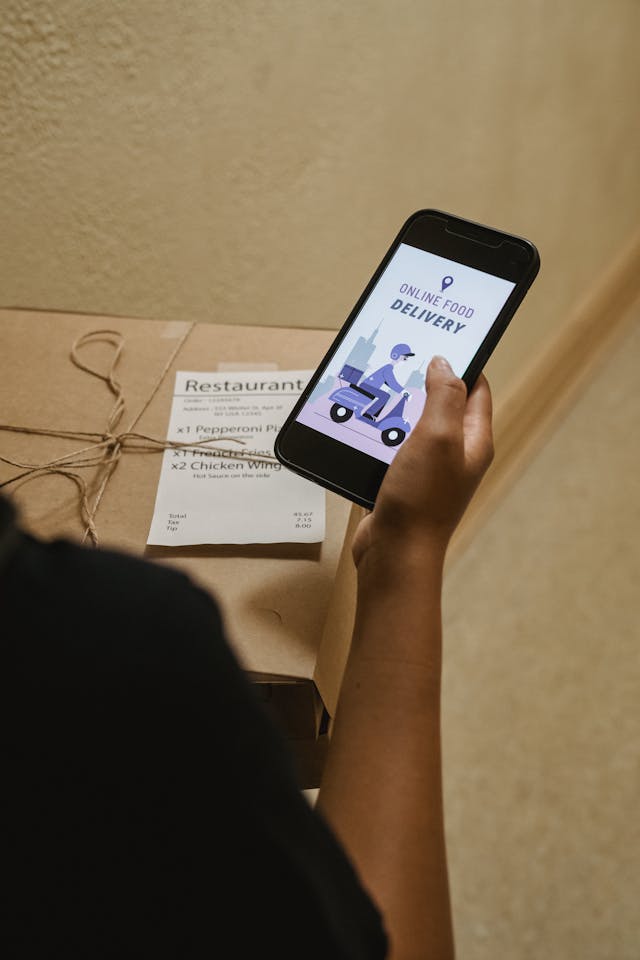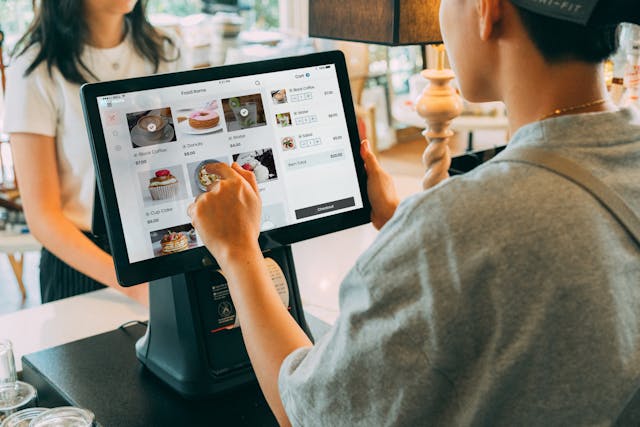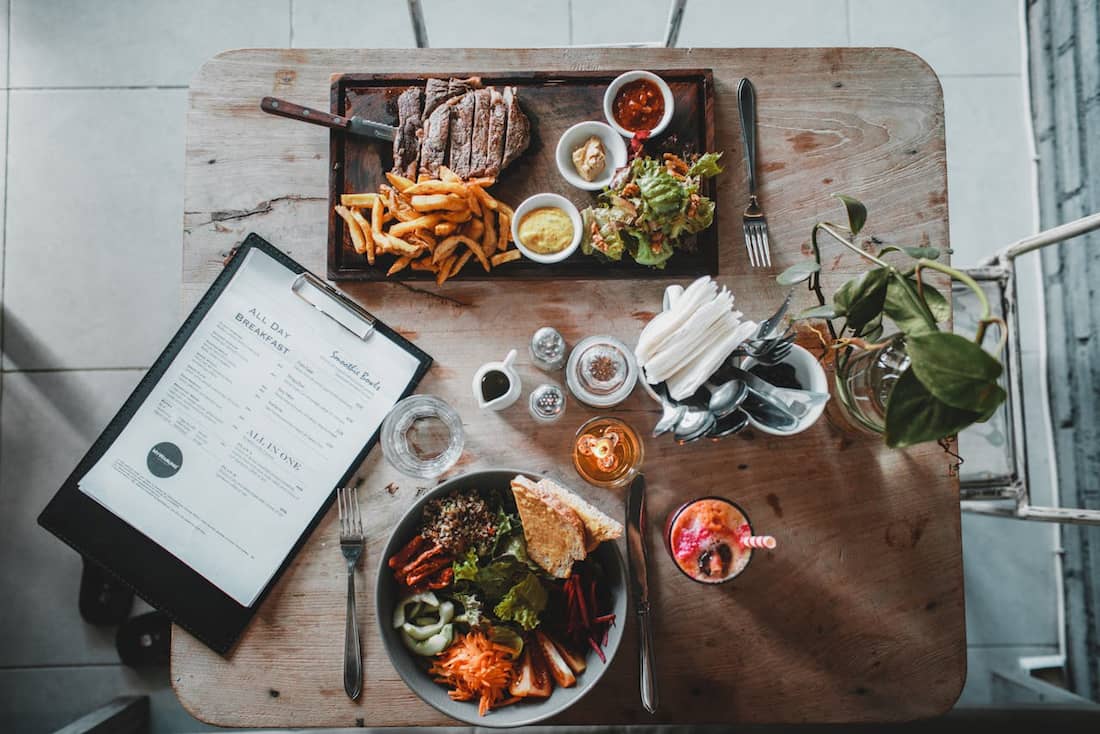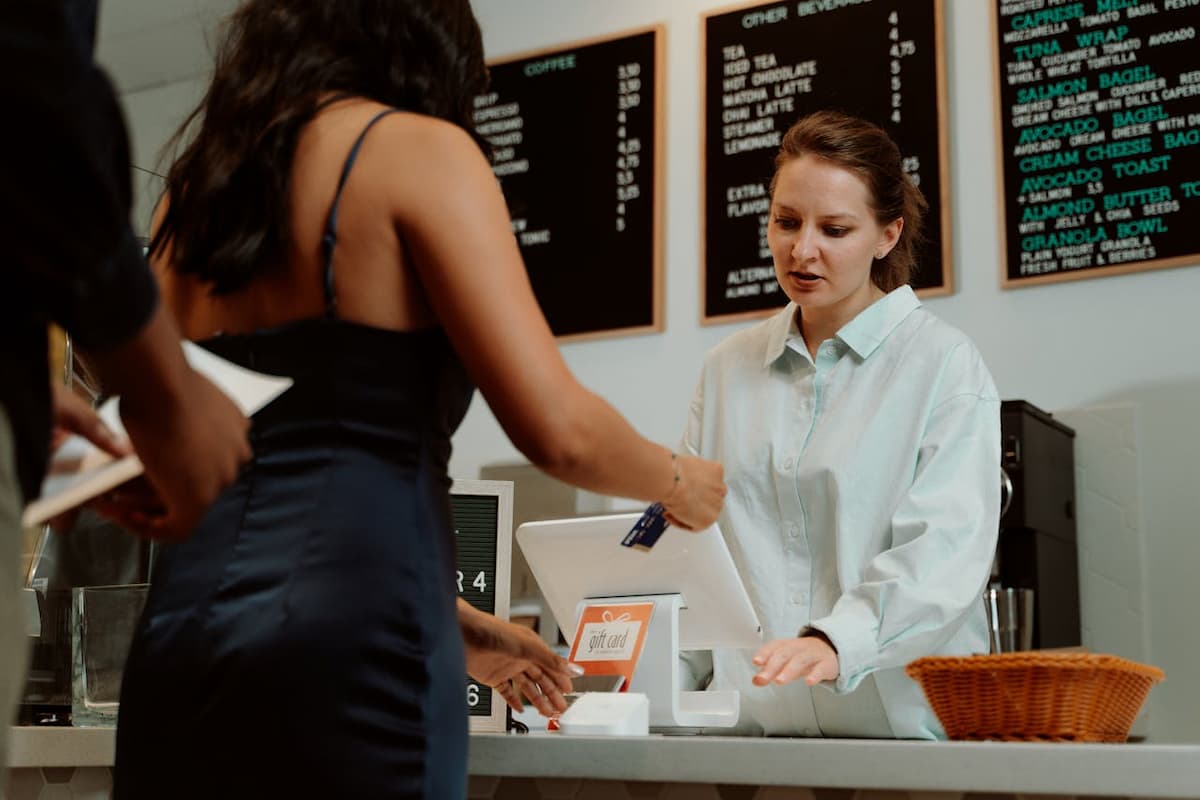Standing out in the restaurant industry is based not only on serving good quality food and providing excellent service and logistics. A key factor for success today is restaurant menu personalization, in such a way as to provide the best possible customer satisfaction. Here are some tips dedicated restaurant owners who want to influence the dining experience and drive revenue.
Table of Contents:
1. What Is a Digital Wallet App (And What It’s Not)?
2. Key Business Use Cases (Why Brands Build E-wallet apps)
3. Modular Architecture That Scales
4. Digital wallet Features Modules
5. How It Works: Mobile Wallet Tech Stack Integration Layers
6. How to Keep Your Digital Wallet Safe?
7. GCC vs Global Market Considerations
9. Build vs Buy: Why Custom Matters
Explore our Digital Wallet Offer
What is Data-Driven Menu Engineering?
Data-driven menu engineering is a very important process for many restaurant owners to design and optimize menus according to collected guest data. This information is most often focused on customers' real-time behavior, their food choices, or seasonal trends. This approach enables better profitability and customer experience design based on valuable insights and customer feedback.
Optimizing menu engineering allows to create menus using data sources gained from POS analytics, historical data, or guest experience after talking to a waiter. For online ordering, online reviews, sales data, and analytical tools can be the determinant. With the help of this information, restaurateurs can create menu offerings taking into account customer preferences and not just their own speculation.
Key Data Sources to Use in Menu Personalization
To begin effective personalization, the collection of relevant guest data must be addressed. Today's restaurant businesses use a variety of digital tools and personal data sources, which together help create a complete picture of customer preferences. Here are some solutions that can make a significant difference in gaining insights or improving a restaurant's bottom line.
POS system
One of the primary tools is a POS system that can track not only which products are most popular, but also which combinations are most often ordered together. For example, if the data analytics shows that guests often pair a certain appetizer with a certain cocktail, this can be highlighted as a recommended menu item combination. This insight goes beyond intuition and replaces guesswork with decisions based on restaurant analytics.
Loyalty programs
Loyalty programs are another valuable insights. They allow restaurants to review individual customers' menu decisions over time - identifying not only repeat online orders, but also changes in habits, seasonal dishes and responses to dynamic pricing strategies. A regular guest who orders salads on weekdays but burgers on weekends creates two different personalization opportunities, depending on the day and channel.

Online ordering platforms
Online ordering platforms and delivery apps offer location-based and time-based behavioral insights. For example, a restaurant may find that spicy dishes are more popular in certain neighborhoods or that plant-based meals spike in sales during January (Veganuary). These sales trends patterns can inform everything from localized menu versions to seasonal LTOs (limited-time offers).
Online reviews
Don't underestimate the power of social proof. Google reviews, Instagram comments, and TripAdvisor customer feedback reveal what people love, what they complain about, and how the restaurant menu is perceived from a customer’s perspective. By mining these qualitative data sources, restaurant owners can find recurring themes - like portion size concerns, presentation praise, or frequent mentions of a specific dish - and adjust the menu or its communication accordingly.
Guest data
Guest data surveys (delivered via email, SMS, or QR code on receipts) can fill in gaps where other systems fall short. When paired with behavioral data, survey feedback adds nuance, revealing why people choose certain dishes - not just what they choose.
Examples of Personalized Menu Strategies
Personalization can take many forms, and successful restaurants often mix multiple strategies depending on their customer base and operational capabilities. One common approach is implementing rotating menus based on customer preferences - dishes that consistently perform well in terms of sales, reviews, or reorder frequency. By periodically spotlighting these high performers, restaurants keep their offerings fresh while leaning into proven preferences.
Another strategy involves offering location-specific menu items tailored to regional or neighborhood tastes. For instance, a seafood chain might feature spicier dishes in coastal regions with a cultural preference for heat, while offering more mild, comfort-focused items in colder inland cities. These kinds of local adaptations resonate well with customers and show that the brand pays attention to the unique preferences of each market and better understanding customers' tastes.

A more advanced and increasingly popular method is using dynamic digital menus - systems that adjust layout, item placement, or even pricing based on real-time conditions. These menus might highlight dishes with high margins when inventory is strong, or push slower-moving items when stock needs to be rotated. This not only improves operational efficiency but also subtly guides guest decisions without being intrusive.
On mobile apps and self-order kiosks, “recommended for you” sections are becoming standard. These are powered by past order history, time of day, dietary preferences, or even weather. For example, someone who consistently orders plant-based meals on weekdays might be shown a new vegan entrée that just launched. Or on a rainy day, the system may promote warm comfort foods or soups. These micro-adjustments build a stronger emotional connection with guests, as the experience feels curated specifically for them.
The Role of Restaurant Data Interpretation in Effective Menu Optimization
While tools and technology enable personalization, the real value lies in how the sales data is interpreted. Without thoughtful analysis, even the most sophisticated system can lead to misleading conclusions. For example, an increase in orders for a particular dish may be due to a temporary promotion rather than a long-term market trend. Understanding the reasons behind the numbers is crucial. Only then can restaurant owners determine strategic directions: whether that means creating seasonal themes, combining dishes into select sets, introducing new price points, or stop selling underperforming dishes.
Benefits of Data-Driven Menu Design
When personalization is done right, the results are clear and backed by data. In the restaurant industry, where margins are tight and competition is high, leveraging data analytics in menu planning can deliver measurable improvements across multiple business areas. Restaurants that embrace data-driven menu design often see a significant increase in average order values, thanks to more relevant and appealing menu items based on guest preferences and behavior.
One of the most significant advantages is the ability to analyze sales data and gather it into a collection of valuable insights. By analyzing data collected by POS systems, online orders, or loyalty programs, restaurant managers can determine which dishes are selling best and when. These insights help identify trends over time - for example, recognizing seasonal patterns, dietary shifts, or growing interest in specific ingredients.
From a cost-effectiveness perspective, a data-driven approach allows operators to control food costs more effectively. By focusing on popular and profitable items, restaurants can optimize inventory levels, reduce over-ordering, and minimize waste. This not only reduces expenses, but also contributes to more sustainable operations - a growing priority in today's market.

Technology Stack for Data-Driven Menus
To enable large-scale menu personalization, restaurants need the right combination of tools that can capture and analyze customer and sales data. A reliable POS system is essential - not only for order processing, but also for tracking the performance of individual menu items and identifying trends in real time. An integrated analytics dashboard allows restaurant operators to visualize this data and extract actionable insights without requiring deep technical knowledge.
Adding a loyalty program brings another layer of value, helping to understand regular customers and adjust offers accordingly. Tools such as Tableau, Mixpanel or custom BI dashboards enable deeper segmentation and data-driven decision-making. They help operators monitor KPIs such as food costs, product popularity or cross-selling opportunities - all essential for effective menu optimization.
For larger companies or companies with multiple locations, using an API-friendly backend enables updates and personalized offerings across all platforms - from mobile apps to digital menus - providing a consistent but flexible menu experience.
The most common pitfalls to avoid
Personalizing menus, as I mentioned, brings a lot of options, but also, as in all things, moderation and common sense should be exercised. Offering customers too many options can lead to confusion. The key is to provide guests with an experience that conquers a good impression rather than making them overwhelmed. Confusion can result in lost customers. Another risk is inadequate interpretation of data. Incorrectly drawn conclusions make personalization fail to meet expectations. Restaurant owners should also make sure that back-end technology from POS systems to kitchen workflows are able to adapt to changes in real time.
Turning Data into Growth with the Right Partner
Personalized, data-driven menu design is no longer a luxury reserved for industry giants - it’s a strategic necessity for any restaurant looking to boost revenue, improve customer satisfaction, and optimize operations. From analyzing sales data to identifying menu trends, success lies in transforming raw information into actionable insights.
At Railwaymen, we’ve helped numerous FoodTech businesses around the globe do exactly that. Our team has delivered tailor-made software solutions for both growing startups and well-established restaurant brands, spanning regions from North America to the Middle East and Europe. Projects like online food ordering systems, dynamic menu management platforms, and POS-integrated loyalty apps are just a few examples of how we’ve supported our partners in driving innovation and scalability in the restaurant industry.
With a strong focus on usability, performance, and business value, we combine technological expertise with deep domain knowledge. If you're looking for a trusted tech partner to bring your data-driven strategy to life, we’re ready to help.
Let’s work together to unlock the full potential of your restaurant - one smart, data-backed decision at a time.

%20(1)%20(2)%20(1).jpg)


